-
Hummingbird Feeder Mask’s Been Around BC
BC? Yes, the new BC… Before Covid. We hope you and yours are faring well in these strange times. And we’re excited so many folks discovered (or rediscovered) their yards, gardening and backyard birds during quarantine.
Actually a full face mask that’s interactive- so how fun is this hummingbird feeder! From a whole new perspective, sprites will feed and dance right before your eyes. The idea came to fruition several years ago, and after a few iterations (including a hole and extra long straw to sip your cocktail) humm-viewer was brought to market. Folks who’ve purchased these unique hummingbird feeders have given some excellent feedback. Truly a swell gift for any nature buff or hummingbird enthusiast! The hit of any backyard gathering as well.
The mask comes choc full of stuff… though the party’s not included!
- bulb for easy filling of tubes
- cleaning brushes
- microfiber cloth for mask cleaning
- easy directions
- cloth bag to store the feeder
- extra long straw for your favorite nectar! (beverage of choice)
As a side note: This past spring, the masks were produced sans the hummingbird feeder and offered to local healthcare workers when masks were in short supply. Kudos to the makers for quickly responding and adapting to the pandemic in a meaningful and helpful way.
Here in Atlanta, male hummingbirds started south about one week ago. Females and juveniles will be going soon. Keep feeders fresh and filled even after hummingbirds are gone. Stragglers from further north may very well need to refuel for the long journey. And it’s a total myth that if you leave your hummingbird feeder up too late, the sprites won’t leave. Utter nonsense as nature tells them when it’s time to go!
And last: We’re begging for you to shop earlier for holiday this year. Not only for the best selection from a small boutique, but to get your gifts on time! Shipping/transit times were very different BC (before covid, remember?). Carriers are already at capacity with the steep increase of online ordering. So please do think twice and order soon… in case your package accidentally takes a trip around the moon!
-
How to Keep Bees Off Your Hummingbird Feeders?
So the bee-proof feeder ports don’t seem to work, bees are keeping hummingbirds away… what’s one to do? Being almost mid-August, hummingbirds in the eastern US will soon start their southern migration, fueling up and fattening up is crucial for their long journey. Feeders need to be clean, nectar kept fresh and most of all… sans the bees!
We follow a few birding groups on social media and the big buzz right now is bees at hummingbird feeders. Everyday, the question is posed hundreds of times with some pretty good (and not so good) answers.
Believe it or not, hummingbird nectar is not their first choice for food. The key here being food… so feed them! Perfectly logical, right? Obviously bees are seeking sweets…. like so many of us at 1:30 AM 🙂
Since you can’t remove bees from the garden (and really shouldn’t anyway) simply offer sustenance in lieu of your hummingbird feeder. Jelly has worked beautifully for us, a very thick sugar syrup works fine too.
Fancy feeder not required, a small plant saucer is ideal for either application. Place a few spoonfuls of jelly in the saucer and set near hummingbird feeders. Once discovered by bees (about 5 seconds) gradually move the saucer further away. Want to hang the impromptu jelly feeder? Poke three holes in a plastic plant saucer, use wire or string and hang from a branch. A hanging votive holder is perfect too.
For the sugar mixture: Equal parts sugar & water creates a very thick and wonderful food source for bees. Use marbles, rocks or pebbles to line the bottom of plant saucer so bees have easy and safe access. Pour mixture so that rocks or or marbles are still above food level and place near your hummingbird feeders. Within seconds… bees will migrate to this new food source.
With the bee problem solved, the last thing you’ll want is ants! That’s pretty easy to avoid as well. If your new saucer feeder is hanging… simply use an ant moat. If the saucer is set on a table or object, place it inside a larger saucer containing water. Be sure the edges of smaller saucer do not touch the outside edges of water saucer. This creates an ideal ant moat to keep pests away from food.
It’s really that easy to thwart bees from hummingbird feeders!
•Jelly or a thick sugar mixture as food
•Small plant saucer to hold food
•Rocks, pebbles or marbles to line the saucer
•String or wire to hang the saucer
•Slightly larger saucer with water to create a moat (if not hanging).Should you prefer less fuss, these orb feeders or any jelly feeder works wonders too!
-
Hummingbird Feeder Hacks for Ants, Wasps and More
From ants and wasps to leaky feeders and wasted nectar… what’s one to do in order to avoid these common hummingbird feeder pitfalls?
Once again we went from Mother’s Day to Father’s Day without posting. Instead of celebrating Dad this year, Happy Father’s Day to All, we’d rather offer some useful hacks pertaining to common problems with hummingbird feeders. By the way, they do make swell gifts for dads who dig birds!
Wasps and Yellow Jackets: Hummingbirds despise them and the secret is in the ports! Since sugar water has no aroma, it’s the feeder itself which may be attracting them, namely the sticky nectar near feeder ports. Keep your hummingbird feeder from swaying because the motion allows nectar to accumulate on the outside of the feeder. This is just one reason we prefer glass hummingbird feeders- for the weight. You can also take the feeder down for a few days until pests dissipate and hang in new location.
Not all plastic feeders are crated equal. Dr. JB’s feeder for example has years of research and testing behind the bee-proof feeder! Specially designed ports actually prevent seeping nectar and bees. It’s received wonderful reviews over the years as well, although after 11 years we’ve just recently started collecting and publishing reviews. Duh! Offered with the red hummer helmet, sprites will surely find this easy to clean hummingbird feeder in no time flat!
The jury’s still out with this hack for wasps around your hummingbird feeder (about 50/50 according to hummingbird groups on social media). A brown crumpled paper bag hung near the feeder may deter wasps. Resembling a hive, wasps will steer clear if not their own digs. Fake or imitation hives are available for purchase online as well.
Ants: They’ll ruin a brand new refill of fresh nectar in seconds. Secreting something that must taste really awful, hummingbirds simp
ly will not drink nectar with even one ant floating inside!
This fix is really simple… use an ant moat with your hummingbird feeder! Some moats use chemicals on the underside, we prefer those using water. Smaller birds may even be spotted drinking from ant moats filled with fresh water. An inexpensive, one-time purchase will spare your nectar and the headache of ants in your feeder simply because ants can’t swim!
Wasted Nectar: Don’t fill your your feeder to the top! Hummingbirds’ tongues are extremely long, wrapping around their skull when fully retracted. Aside from their long beaks, tongues are 1.5 times the length, allowing them to lap nectar from deep within flowers. Nature equipped the sprites accordingly!
In addition, make your own nectar because it really is simple! Once you do for the first time, you’ll scratch your head ask yourself “why didn’t I do this before?”. Now if you ask 3 people- you may get 3 different answers, but the ratio is always 1:4 and cane (not beet) sugar is preferred.
Here’s our take:
1 Cup plain table sugar to 4 Cups water… that’s it and NOTHING ELSE, ever!No need to boil water, though boiling 1 cup dissolves sugar quickly and effectively. Add 3 Cups of cold water and there’s no cooling time. Store remainder in fridge for up to two weeks. During extreme heat, nectar must be changed every 1 to 2 days as sugar ferments quickly. Should this commitment become a pain or too time consuming, it’s best to take your hummingbird feeder down and concentrate on nectar-producing flowers to feed hummingbirds naturally. Leaving a feeder with old nectar is definitely wasteful as sprites will avoid nasty food. Aside from flowers, leaf misters, solar bubblers, drippers or any feature providing moving water will entice birds, especially during the long and hot dog days of summer… here in Atlanta anyway!
Leaky Feeders: Try a top-fill feeder sans any base. Parasol’s glass hummingbird feeders in blossom, bloom or bouquet styles will not leak or drip… ever! There’s no seams or attachments for nectar to seep through. Aside from being beautiful garden art, they’re handmade in Mexico from recycled glass.
If using the tube style hummingbird feeders and dripping nectar is a problem, move the feeder to shade. Rubber stoppers may contract and expand in heat/full sun. These feeders also work on a vacuum principle, meaning there can be no air inside the vessel. Try filling the feeder completely (in the sink with plain water) to see if this alleviates dripping. You can also opt for replacing the tube itself. Some tubes contain a tiny steel ball-bearing which helps stop leaking.
Flowers: Always plant native for best results to offer birds food and shelter, it’s a win-win situation. Checkout Audubon’s Plant Database for recommendations on your locale, just enter your zip code and the list returns shrubs, trees, vines and the best nectar producing flowers for your area.
When purchasing from big box garden centers, you may want to steer clear of this tag. We’ve removed the store name as a social media post was recently censored (bummer).
The buzz around town is this chemical is harmful to bees- so one must ponder if it’s not equally harmful to all pollinators as well?
Since butterflies, bats, bees and hummingbirds all feed from the same flowers… we’ll let you be the judge.
We hope at least one of the above hummingbird feeder tips might be helpful. Whether you’re novice or advanced back yard birding fanatic… happy summer and birding 🙂

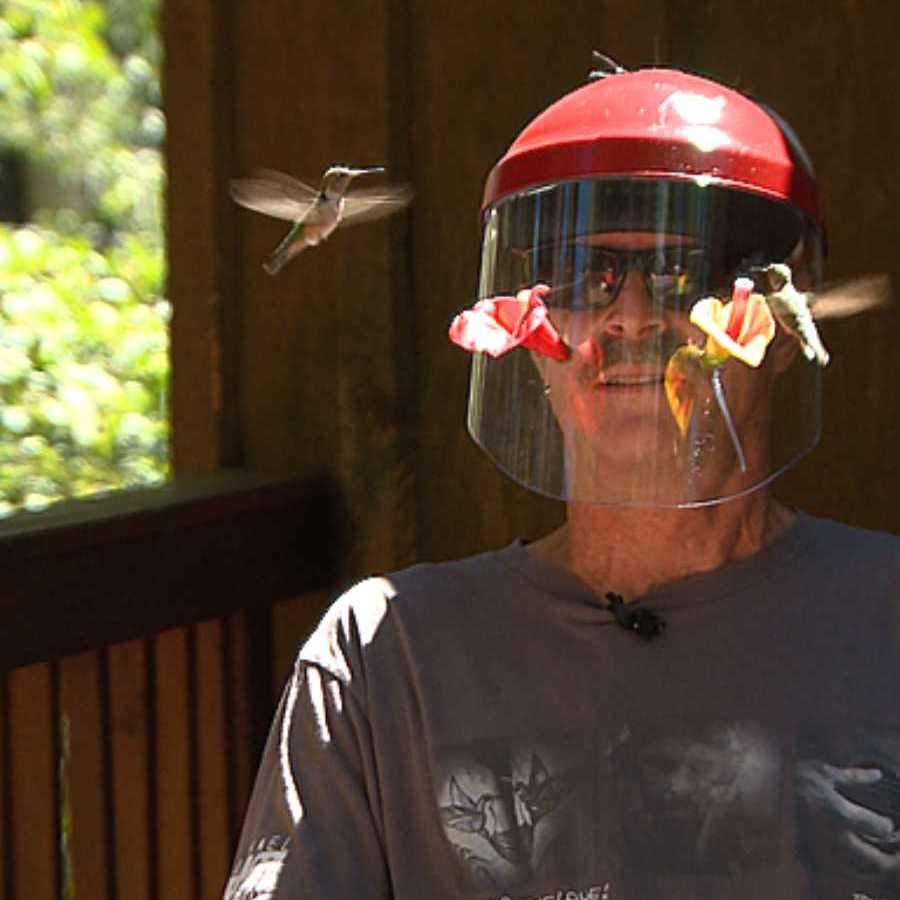
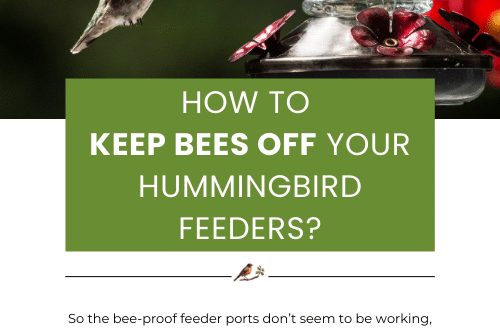
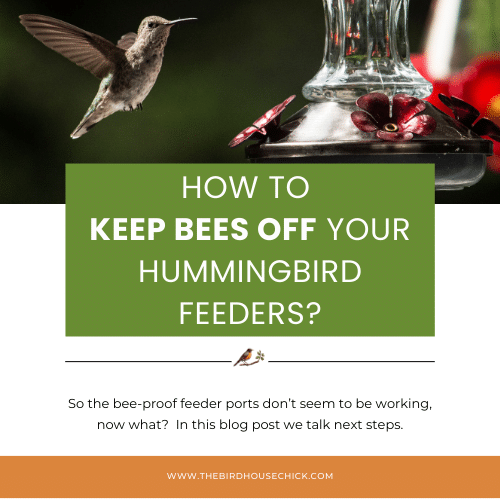
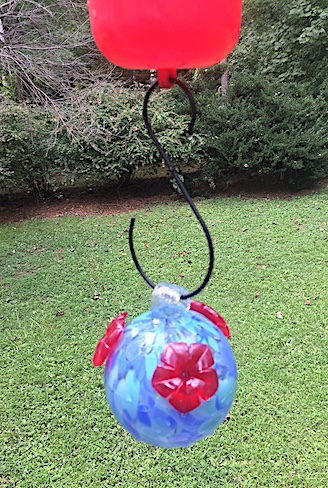 So the bee-proof feeder ports don’t seem to work, bees are keeping hummingbirds away… what’s one to do? Being almost mid-August, hummingbirds in the eastern US will soon start their southern migration, fueling up and fattening up is crucial for their long journey. Feeders need to be clean, nectar kept fresh and most of all… sans the bees!
So the bee-proof feeder ports don’t seem to work, bees are keeping hummingbirds away… what’s one to do? Being almost mid-August, hummingbirds in the eastern US will soon start their southern migration, fueling up and fattening up is crucial for their long journey. Feeders need to be clean, nectar kept fresh and most of all… sans the bees!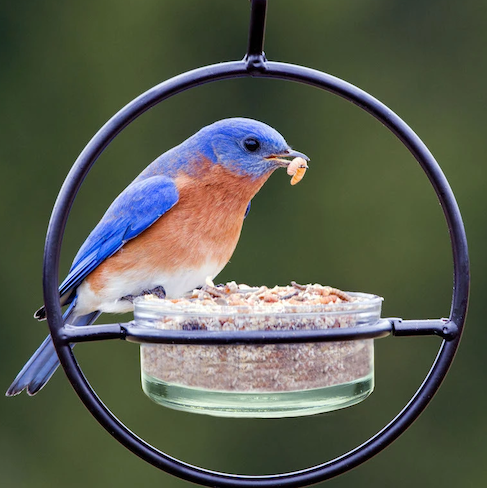
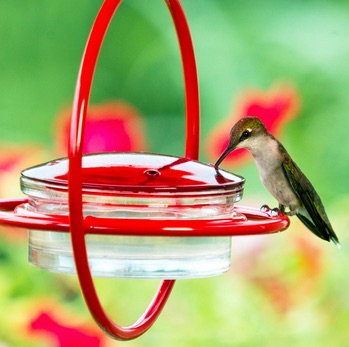 From ants and wasps to leaky feeders and wasted nectar… what’s one to do in order to avoid these common hummingbird feeder pitfalls?
From ants and wasps to leaky feeders and wasted nectar… what’s one to do in order to avoid these common hummingbird feeder pitfalls?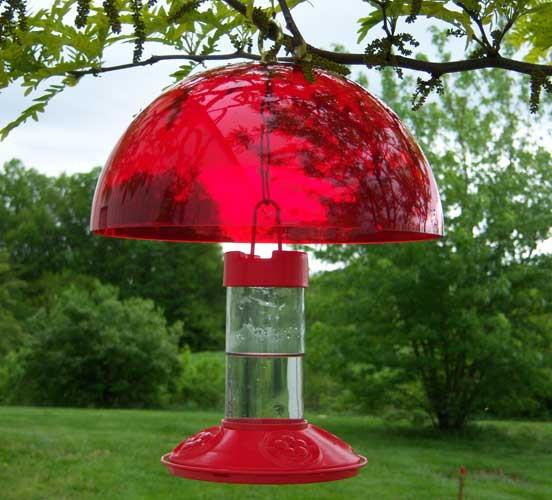
 ly will not drink nectar with even one ant floating inside!
ly will not drink nectar with even one ant floating inside!
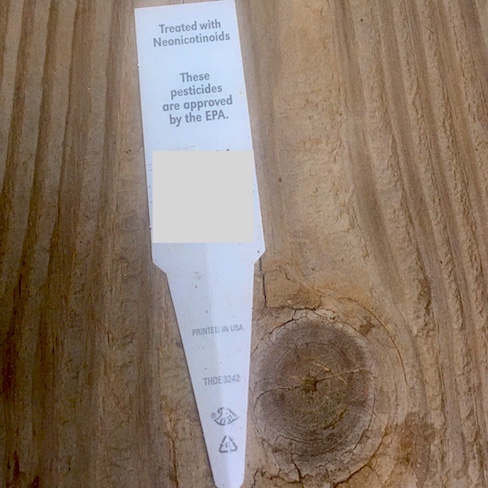 When purchasing from big box garden centers, you may want to steer clear of this tag. We’ve removed the store name as a social media post was recently censored (bummer).
When purchasing from big box garden centers, you may want to steer clear of this tag. We’ve removed the store name as a social media post was recently censored (bummer).